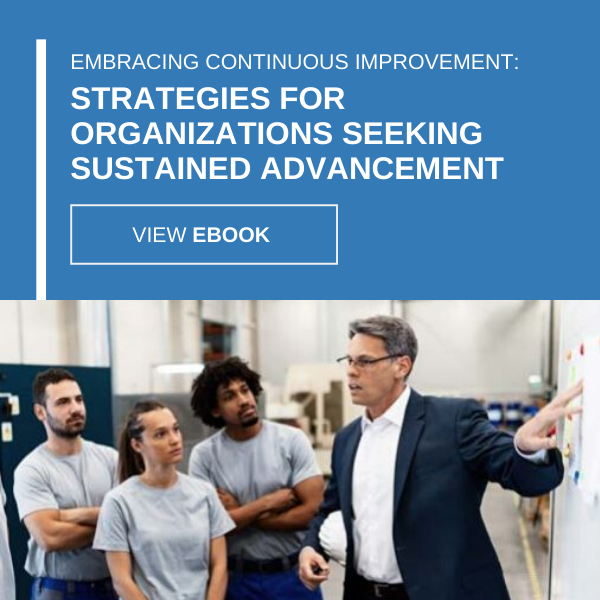
How to Optimize Talent Management in B2B Manufacturing
As a manager in a business-to-business manufacturing environment, your goal is to ensure the accuracy and proficiency of your systems and employees. Other organizations depend on your work, and if you fall behind, the chain reaction could be catastrophic. As a manager, you need to find the top talent that you can mold and train for long-term success, and it starts from the day you put out a job description. Here are some important guidelines to follow for finding the best employees, ensuring maximum productivity, and retaining top talent for years to come.
Finding The Best Employees
The first step to a seamless production environment is finding the right people for the job. In addition to searching for those who have experience in what you do today, it’s wise to consider how tech and systems are evolving and to hire for the skills of the future.
One key skill is data analysis. This function is essential for checking on your processes to verify they’re running efficiently and that you’re making the most of your talent. You’ll also want to search for candidates who are familiar with automation. Machines are becoming more advanced, and many can perform repetitive tasks without human involvement. Good automation could bring your factory to the next level.
While reviewing applications, search for candidates who have experience in data analysis and automation. Pay special attention to people who have worked in the B2B manufacturing space. Since information on an application is not always obvious, ask good questions during the interview so you know you’re making the right choice when you hire.
Another way to find top talent is through your job listings. Create a strong job description that tells potential candidates exactly what you’re looking for and the requirements they’ll need to succeed. If you’re having trouble finding candidates, use social media and consider paid advertising. Your best option is to ask current employees you trust to refer others so you know you’re getting the best and brightest.
Staying Productive With Training And Analytics
Once you find the best employees, you need to have a system in place that ensures they can work as efficiently as possible.
Proper Training
One of the tactics that can create a smooth operation and mitigate potential supply chain issues is to put your staff through proper training. Teach employees the ins and outs of the work they’ll be completing and allow them to provide feedback that could prove valuable. As time goes on, offer annual training to reinforce current processes and teach new strategies.
How To Use Analytics
When you get things up and running, put your accountants and data analytics professionals to work so they can verify that you’re making the most of your staff and equipment. They can also ensure that you’re using your money wisely and that you can set aside enough for future staffing and development.
When reviewing your equipment and production costs, decide whether you’ll look at actual or standard costing. Many manufacturers use standard costing, which is when you plug in predetermined costs of materials, labor, and overhead using historical data. This method is useful when costs are generally predictable.
However, if you’re adding new processes and employees, you may want to go with actual costing, where you track costs as they occur. This latter method may take longer but you’ll have more precision with your numbers to make the best decisions.
You can review these numbers on a quarterly basis to determine if there have been any major shifts by viewing them with a comprehensive dashboard. Use it to track the figures by employee, machine, waste time, and more.
While you’re running analytics and measuring productivity, you may find that you can embrace automation and replace many processes that are currently done by hand. Many data entry tasks, like inventory management and order processing, can be done through automation. If employees are spending a lot of time on menial, repetitive tasks, let the machines go to work so your staff can focus on bigger things.
Retaining Top Talent
Talent management isn’t only about finding the best people. It’s also about keeping them happy and content so you can retain their services for as long as possible. A big part of a good retention strategy is providing a career path and opportunities for development. If an employee knows that there could be a promising future at your business, they’re more likely to stay and do their best work.
Recognition and monetary perks will also keep the team excited, so implement an employee incentive program to help retain talent. Incentives can include monetary bonuses, gift cards, time off, or other benefits. When you create a program and present it to the team, ensure that you set clear criteria so employees understand what they need to do to get an incentive. When the program is active, check periodically to verify that your systems are actually tracking team progress. Your team is likely to work harder and share their successes when they know there are perks at stake.
Finally, your talent is more likely to stick around when they know they’re cared for and listened to every day. Management should reach out to their teams regularly to check in and provide guidance. You should also be willing to accept feedback via surveys and anonymous messaging and take action to correct any concerns.
Conclusion
Since B2B manufacturing is an essential part of many thriving industries, it’s vital that you have the best people on the job. Take the time to train your people, monitor your processes, and set your operation up for success.
*This article is written by Ainsley Lawrence. View more of Ainsley’s articles here.






